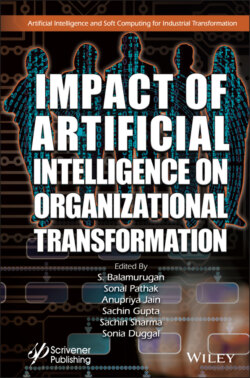Читать книгу Impact of Artificial Intelligence on Organizational Transformation - Группа авторов - Страница 46
2.6 Artificial Intelligence
ОглавлениеThe simplest definition of AI was given by famous professor McCarthy (1950), dating back to the 1950s by Dartmouth professor Joseph McCarthy, which is a process of using software to mimic aspects of learning and decision-making so that a machine can be made to simulate it. Since the starting of AI, its applications have modified and process has scaled to accommodate growing technology. At present, modern world has stuck to the concept, AI is being used nearly everywhere:
Google’s Map application uses AI to predict traffic patterns to offer the quickest route and also tells about the precise amount of traffic and congestion one would find after an hour or two on any required route.
Online shopping at retailers like Amazon use AI to make price changes and product recommendations to meet customer’s demands.
Uber and Lyft use AI to determine fair pricing based on peak usage.
Banks use AI as part of their fraud protection and prevent identity theft.
Credit card companies use AI to determine whether a customer is eligible for a credit increase.
Every flight in the world uses AI-powered autopilot to steer the vehicle (humans only account for ~7 minutes of control, reserved for take-offs and landings).
Spam filters on your email sort out behavior patterns of junk mail and scammer tactics.
Plagiarism checks in professional and academic settings can quickly analyze papers for stolen or redundant content.
The list goes on. So, if you think that AI is something new and has come up in recent years, then it is important that you know that it is an old concept which was there for many decades though not in the same shape as it has evolved over years. Aspects of AI have been refined in recent years which have made it smarter to the current status, with machine learning and deep learning being popular buzzwords.
Machine Learning means training a machine to perform a particular action by programming algorithms set by a programmer. This includes things like recognizing a particular any patter of expenditure made by a person by her credit card and then indentifying any inconsistency to trace fraud. As more algorithms are added and data accumulated, the AI becomes more precise and capable of processing data to make better-informed decisions.
Deep Learning, which is almost like machine learning, is a process of training a machine to perform actions and become more precise over time. However, deep learning goes further, involving an approach that involves artificial neural networks—similar to how human brains learn patterns of behavior (for example, someone falls and you automatically extend your hand to help without any conscious thought). With researchers making new breakthrough in this concept every year, deep learning becomes a type of responsive intelligence that learns as it goes. Usually, deep learning enhances machine learning by being able to adapt to new data by itself, changing algorithms to create more favorable output. Of course, this requires considerable amounts of computing power and it has not been until recent years where humans have closed the gap to creating amore sophisticated and developed form of AI.
